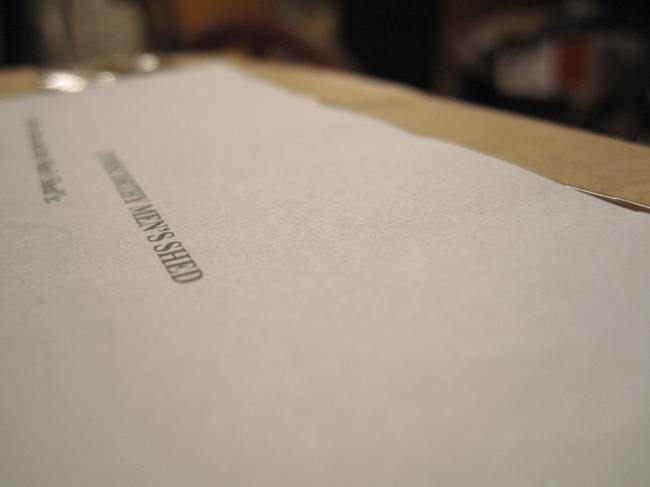Enniscorthy, like many other towns across Ireland, is to lose its Town Council, bringing to an end hundreds of years of its local authority. This blog posting is not about the benefits or drawbacks of the changes to local government, but about the lesser- known history of local government in the town in days gone by.
Local government in Enniscorthy- on a formal basis- dates back to the early seventeenth century. James I, combining reform with a desire to have an Irish parliament on his side, granted charters to forty boroughs in the years 1612-13. As each borough elected two members of parliament, this deluge of new boroughs (in areas of the country previously unrepresented) resulted in a swelling of the ranks of parliamentarians- many of whom, it may be presumed, were loyal to the crown, rather than to their constituents. (1) As a result, from then until the Act of Union in 1801, Enniscorthy returned two MPs to the Irish Parliament in Dublin. (2)
In March 1613 the borough of Enniscorthy was granted a royal charter, and an additional one in 1690 under James II. (3) In the early years of the charter cleanliness was taken seriously: in 1702 the Portreeve ordered that every tenant that held a lease from the Corporation have the area around their house paved; in 1713 it was ordered that pigs be penned, to prevent them from roaming the streets. This was followed, some years laters, by an order that townspeople were obliged to sweep the streets outside their houses every Friday (4). An 1835 parliamentary report on local authorities included Enniscorthy in its findings, and found that things were not what they should be. Based on the two charters, it found that the Corporation consisted of the Portreeve (elsewhere known as the mayor), Free Burgesses and a commonalty, that is to say, people without a special rank or position. The Portreeve and a deputy Portreeve were elected on June 24th annually, and sworn into office on September 29th. Their electors were twelve Free Burgesses; these were (initially) townspeople with full rights of citizenship. Such people were appointed for life. However, the Newtown Act of 1748 altered this requirement, permitting non- resident burgesses (5) A number of town officers also existed: a recorder, a town clerk, two serjeants at mace, and a bellman.
Additionally, the charter allowed the town to hold a market every Thursday, and a fair twice yearly- August 15th and September 8th. (6) An attack on the Lady Day fair (August 15th) in 1569 resulted in large loss of life, as well as the seizure of goods and animals by the attacking Butlers and Kavanaghs; and the destruction of Enniscorthy Castle.
In other towns the recorder was a legal professional who served as a part-time judge, but in 1830s Enniscorthy, this apparently did not happen. The function of the serjeants at mace was to act in a constabulary role but by the time of the parliamentary report, the town was served by a number of county police, who were under the control of the Portreeve within the limits of the town. The Portreeve received an annual salary, which in the 1830s was £7-8 per year, around €6,200- €7,100 in modern terms.
The Portreeve also operated what may be termed in today’s language, a small claims court. It dealt with claims worth under (in 1830s currency) £3 6 shillings and 8 pence, or €2,400 in 2014 prices. (7) Despite the existence of these office holders, there appears to have been little work done by the corporation: it did not light, pave or cleanse the town, and it would take further reforms, later in the nineteenth century, for local government to transform the town by the Slaney. A 1785 survey of the Earl of Portsmouth’s estate- much of Enniscorthy at the time belonged to the Wallop family- reported that water was carried into the town centre by wooden pipes from the Moyne, and that the streets were “very badly paved”(8). Some time in the intervening years, neglect had taken root. As a result of the parliamentary report, Enniscorthy’s system of local government, like similar administrations across the country, was abolished in the 1840s (9).
Reform initially came with the establishment of the Town Commissioners in February 1851: their role was “the lighting, cleansing and watching of the town” (10) Under their responsibility was a town boundary which stretched from St. John’s Bridge- Bellefield- Moyne – Dublin Road – Rectory Gate – Solsboro Road – Drumgoold Cross Roads- “Bear Meadows Gate”; these boundaries were later altered to a limit of 80 perches (or 1,680 feet) from the Market Square (11). Street lighting- provided by the Gas Company- arrived in January 1852, surviving until 1924 when the Urban District Council (as it was by then known) introduced electric lamps (12). These Commissioners gave way to a new body with the same title, but with expanded powers, in June 1855 (13).
References:
(1) Potter, M. (2013) ‘The greatest gerrymander in Irish history? James I’s 40 boroughs of 1612-13’ History Ireland 21(2) online: http://www.historyireland.com/early-modern-history-1500-1700/the-greatest-gerrymander-in-irish-history-james-is-40-boroughs-of-1612-13/
(2) Hanna, W. & King, M. (1835) Report into Municipal Corporations in Ireland, Volume 8 495-497 at 495-6
(3) Ibid. 495
(4) Edwards, R. (2010) “Enniscorthy: ‘Mean village to fine town’” in Tóibín, C. (ed.) Enniscorthy: A History 111-130 at 114
(5) http://en.wikipedia.org/wiki/Newtown_Act
(6) Hanna & King 496-7
(7) Valuations made using calculator on http://www.measuringworth.com/ppoweruk/
(8) ‘Survey of Portsmouth Estate 1785’ Enniscorthy 2000 32-38 at 34
(9) Tóibín, M. ‘A Century Passes: Enniscorthy 1846-1946’ Enniscorthy 2000 113-131 at 123
(10) Ibid.
(11) Ibid. 124
(12) Ibid. 125
(13) Ibid. 123
Sources:
Edwards, R. (2010) “Enniscorthy: ‘Mean village to fine town’” in Tóibín, C. (ed.) Enniscorthy: A History
Hanna, W. & King, M. (1835) Report into Municipal Corporations in Ireland, Volume 8
Potter, M. (2013) ‘The greatest gerrymander in Irish history? James I’s 40 boroughs of 1612-13’ History Ireland 21(2)
Tóibín, M. ‘A Century Passes: Enniscorthy 1846-1946’ Enniscorthy 2000 113-131
Websites:
http://en.wikipedia.org/wiki/Newtown_Act
http://www.measuringworth.com/ppoweruk/





































